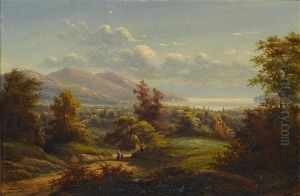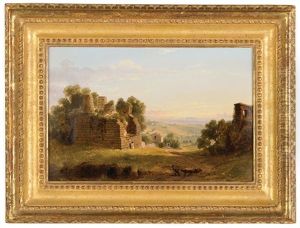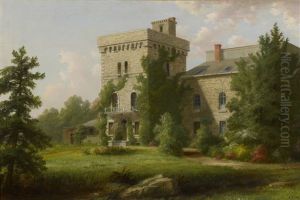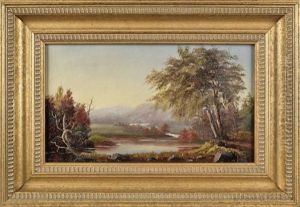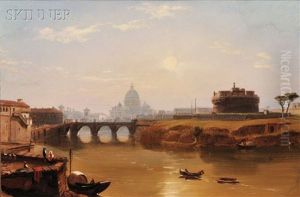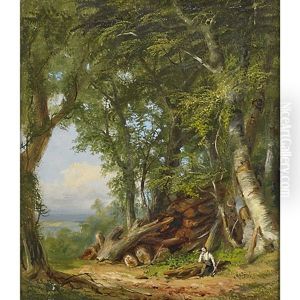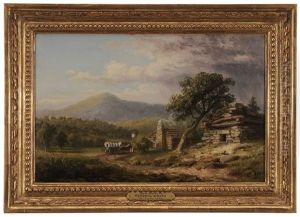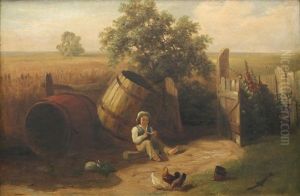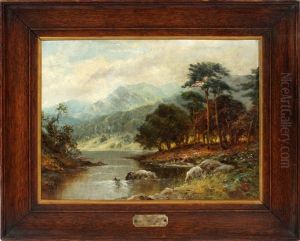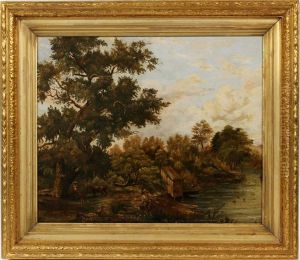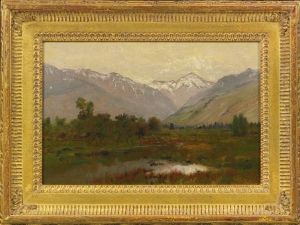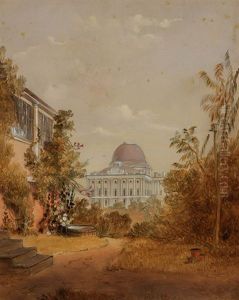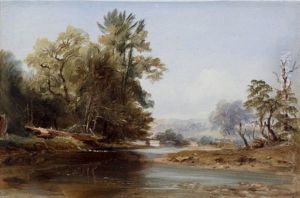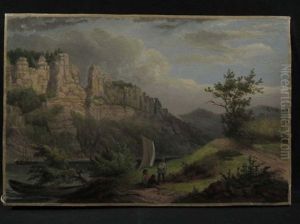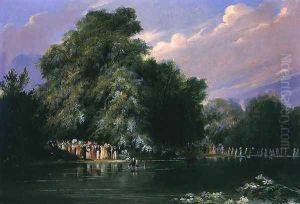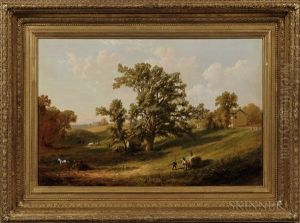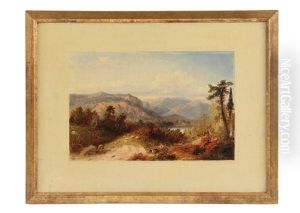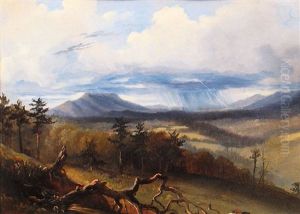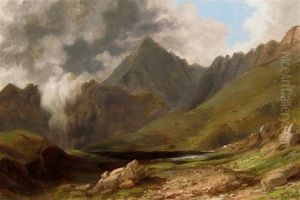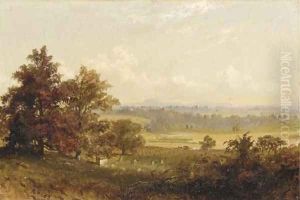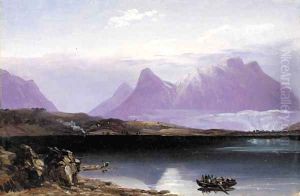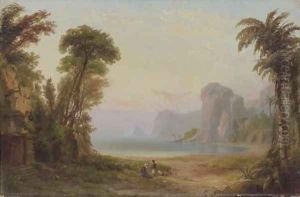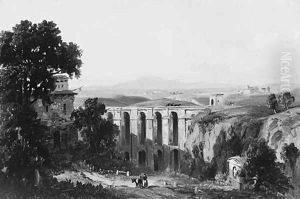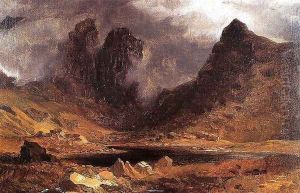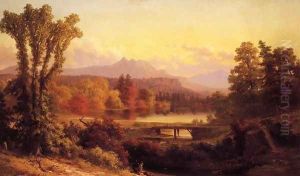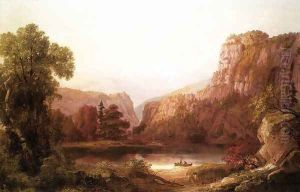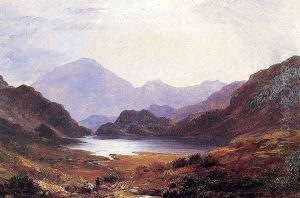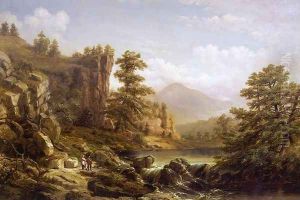Russell Smith Paintings
Russell Smith was an American painter, born on June 9, 1812, in Glasgow, Scotland. He emigrated with his family to the United States in 1819, settling in western Pennsylvania. Smith began his career as a scenery and theatrical backdrop painter in Pittsburgh, where he also received some of his earliest art instruction. Throughout the 1830s, he transitioned into landscape painting, inspired by the natural beauty of the American wilderness, particularly the Allegheny Mountains.
In 1835, Smith moved to Philadelphia, which was then a major center for the arts in America. There, he further developed his skills and reputation as a landscape artist. He became known for his detailed and romantic portrayals of the American landscape, often incorporating dramatic lighting and naturalistic detail. His work during this period was heavily influenced by the Hudson River School, a group of American landscape painters who emphasized the beauty and grandeur of the American wilderness.
Throughout his career, Russell Smith continued to evolve as an artist. In addition to landscapes, he produced a significant body of work that included theatrical scenery, portraits, and historical paintings. He also experimented with photography as a tool for capturing landscapes that he would later paint, a practice that was innovative for his time.
Smith married Mary Priscilla Wilson in 1837, and they had two children who also became artists: Xanthus Smith, known for his maritime and Civil War subjects, and Mary Russell Smith, a recognized painter of animals and still lifes. The family often worked together on various artistic projects, with Russell Smith teaching and guiding his children in their artistic pursuits.
Russell Smith's contributions to American art were recognized during his lifetime, and he was a member of several prestigious art organizations. He continued to paint and exhibit his work until his death on July 7, 1896, in Philadelphia. His legacy is preserved in the collections of major museums and galleries across the United States, where his paintings continue to be admired for their beauty and historical value. Smith's work captures a pivotal period in American art, where the focus shifted towards celebrating and preserving the natural beauty of the American landscape, making him a significant figure in the development of landscape painting in America.
